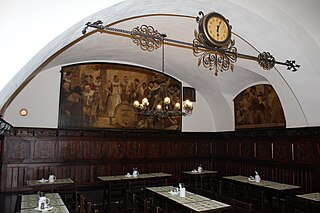Les hele diskusjonstråden kommentaren er knyttet til her.
Takk for lenker og utdyping! Du har helt klart rett i at allmenningenes oppløsning må forstås primært utifra juridisk og økonomisk utvikling fra tidlig moderne tid, det er jo nettopp dette David Bollier er opptatt av også. Vil tro du vil ha stor glede av hans forrige bok "Green Governance: Ecological Survival, Human Rights, and the Law of the Commons", som han har laget ei flott hjemmeside til: http://commonslawproject.org/
Selv har jeg kun lest "Think Like a Commoner", som er ment som ei inspirasjonsbok for den allmenne mann og kvinne.
Motsatsen til den suburbane eneboligen, hvor alt er brutt ned til enkeltheter, er Alexanders "A Pattern Language" hvor alt er vevd sammen i et stort hele. Se også Mehaffy & Salingaros essay "A Vision for Architecture as More Than the Sum of Its Parts": http://permaculturenews.org/20...
Også David Bollier ser ut til å ha et mildest talt anstrengt forhold til den suburbane eneboligen, og ser denne som en videreføring av "the enclosure movement" i Nord-Amerika og frarøvelsen av de opprinnelige amerikanernes land. Noe han bl.a. har redegjort for i essayet "The Fateful Choice: The Pilgrims Assign Private Property Rights in Land": http://leveveg.blogspot.no/201...
As Bradford wrote: ‘‘And no man now thought he could live except he had catle and a great deale of ground to keep them all, all striving to increase their stocks. By which means they were scattered all over the bay quickly and the townes in which they lived compactly till now was left very thinne.’’ You might say that private property rights in land were the beginning of suburban sprawl. — David Bollier
 |
| Den norske eneboligen anno 2014 kan spores tilbake til fordrivelsen av de opprinnelige amerikanerne |
Dessverre er det et faktum at suburbia var/er en bevisst strategi for å rive i filler allmenningheten og hindre allmenningene fra å gjenoppstå. Douglas Rushkoff har redegjort for dette overgrepet i sitt fabelaktige 2011-intervju hos Hilobrow: http://hilobrow.com/2011/11/04...
DR: They had to do that in order to prevent things from getting out of control. The significant points in the development of public relations were all at crisis moments. For example, labor movements; it’s not just that labor was revolting but that people were seeing that labor was revolting. There was a need to re-fashion the stories so that people would think that labor activists were bad scary people, so that people would think they should move to the suburbs and insulate themselves from these throngs of laborers, from “the masses.” Or to return to the Quaker Oats example, people used to look at long-distance-shipped factory products with distrust. Here’s a plain brown box, it’s being shipped from far away, why am I supposed to buy this instead of something from a person I’ve known all my life? A mass media is necessary to make you distrust your neighbor and transfer your trust to an abstract entity, the corporation, and believe it will usher in a better tomorrow and all that.
DR: Everything’s got to be individual, this was all planned! Any man that has a mortgage to pay is not going to be a revolutionary. With that amount to pay back, he’s got a stake in the system. True, he’s on the short end of the stick of the interest economy, but in 30 years he could own his own home.
It got the most crafty after WWII when all the soldiers were coming home. FDR was in cahoots with the PR people. Traumatized vets were coming back from WWII, and everyone knew these guys were freaked out and fucked up. We had enough psychology and psychiatry by then to know that these guys were badly off, they knew how to use weapons, and — this was bad! If the vets came back into the same labor movement that they left before WWII, it would have been all over. So the idea was that we should provide houses for these guys, make them feel good, and we get the creation of Levittown and other carefully planned developments designed with psychologists and social scientists. Let’s put these vets in a house, let’s celebrate the nuclear family.
 |
| Den suburbane eneboligen er spesialdesignet for å ufarliggjøre karer som disse |
PN: So home becomes a thing, rather than a series of relationships?
 |
| Hjemmet har gått fra å være del av en lang rekke forbindelser til å bli et motbydelig konsumentprodukt, den isolerte eneboligens forbannelse |
DR: The definition of home as people use the word now means “my house,” rather than what it had been previously, which was “where I’m from.'” My home’s New York, what’s your home?
PN: Right, my town.
Det er ingen ølhaller i suburbia DR: Where are you from? Not that “structure.” But they had to redefine home, and they used a lot of government money to do it. They created houses in neighborhoods specifically designed to isolate people from one another, and prevent men in particular from congregating and organizing — there are no social halls, no beer halls in these developments. They wanted men to be busy with their front lawns, with three fruit trees in every garden, with home fix-it-up projects; for the women, the kitchen will be in the back where they can see the kids playing in the back yard.
PN: So you don’t see the neighbors going by. No front porch.
Modernismen, som inkluderer den suburbane eneboligen, er i sin essens et verktøy for å kontrollere massene:Relatert:
Slike synspunkt gjorde Le Corbusier til ein naturleg alliert for herskarane av den moderne verda. Han ynskja å gjera alt om til ein rasjonell maskin, og ein rasjonell maskin er lett å skjøna og kontrollera for dei som sit med makta. Då han døyde i 1965 sa sovjetarane; ”moderne arkitektur har mista den største meisteren sin,” mens president Johnsen kommenterte; ”innflytelsen hans var universell og arbeida hans inneheldt ein permanent kvalitet berre få kunstnarar gjennom historia har eigd.” Leonid Bresjnev og Lyndon Johnson visste kan hende ikkje mykje om kunst, men dei visste kva dei hadde grunn til å lika. — James KalbNei, jeg tilskriver ikke Descartes alt som er vondt og galt her i verden. Dette tilskriver jeg Le Corbusier! Descartes utviklet en nyttig modell for vitenskapen, som dessverre har blitt misbrukt. Ikke minst av Le Corbusier. Noen sier at Le Corbusier var et barn av sin tid. Dette er feil. Vår tid er et barn av Le Corbusier. Mer enn noensinne!
- Gale entreprenører vil ødelegge indre Oslofjord og Nesodden: http://steigan.no/2014/10/22/g...




No comments:
Post a Comment
Note: Only a member of this blog may post a comment.